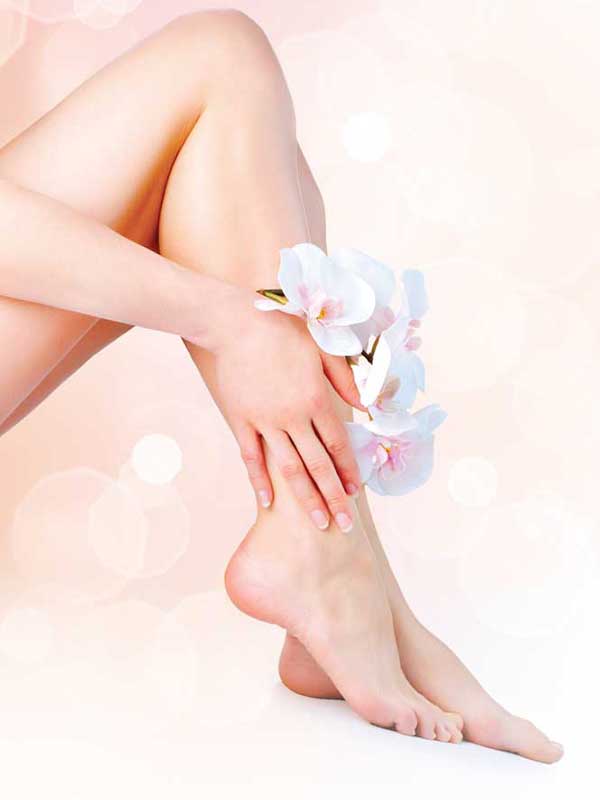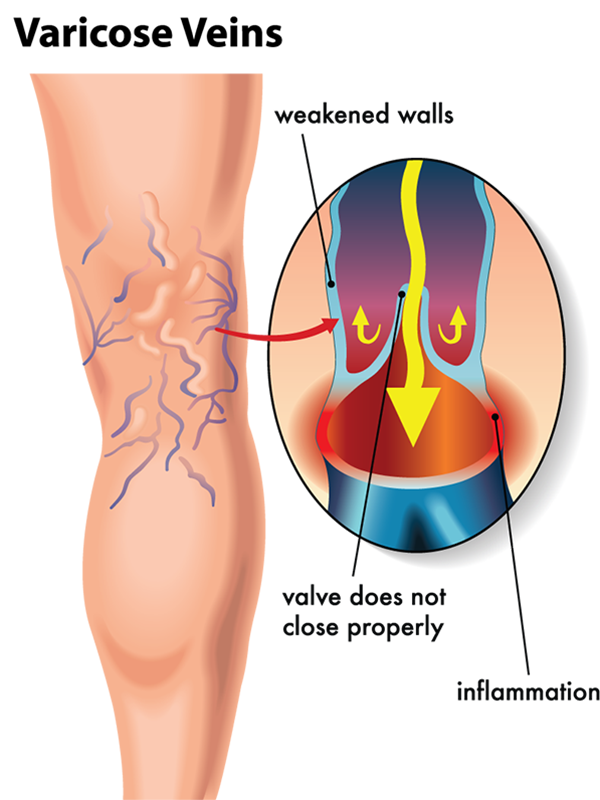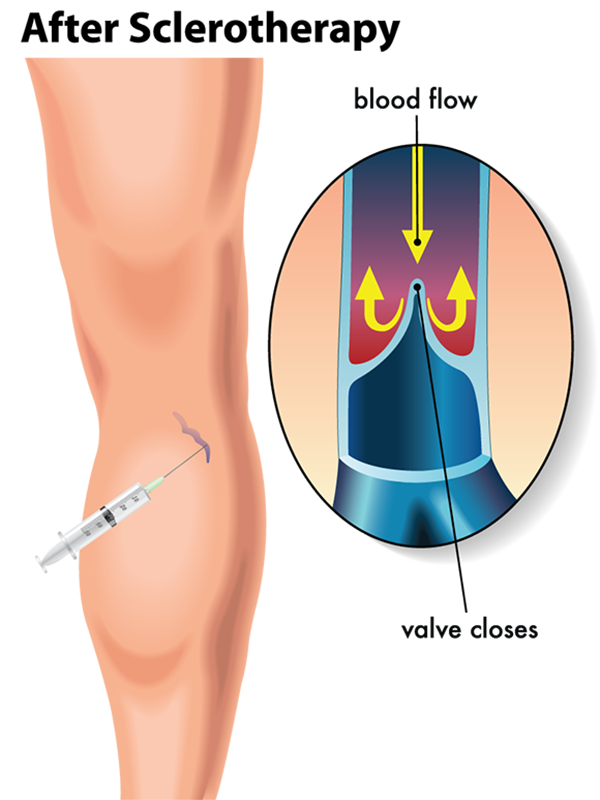Sclerotherapy
Spider veins or telangiectasis of the legs are a common problem that particularly affect women. Small purple, blue or red veins can form anywhere on the leg, from the top of the thigh to the ankle, and can sometimes occur on the face as well. These veins appear as connected lines resembling a sunburst or spider web pattern or as short, unconnected lines. (Fig. A) On many people, they are relatively inconspicuous, because they are confined to a small area; however, some people become distressed when larger areas of skin are affected and the veins become more noticeable.
Varicose veins are larger, sometimes raised veins which are often blue in color. These are not the deep veins connected with the valve system; however, they can become quite painful, producing a burning or throbbing sensation. Although these superficial varicose veins and spider veins carry blood, neither are necessary to the circulatory system.
Today, because of modern technology, both telangiectasis and superficial varicose veins can be treated through a procedure called Sclerotherapy. Sclerotherapy is a technique which involves the use of a very fine needle to inject a solution directly into the veins. The solution causes blood within the vein to disappear or become less obvious.




